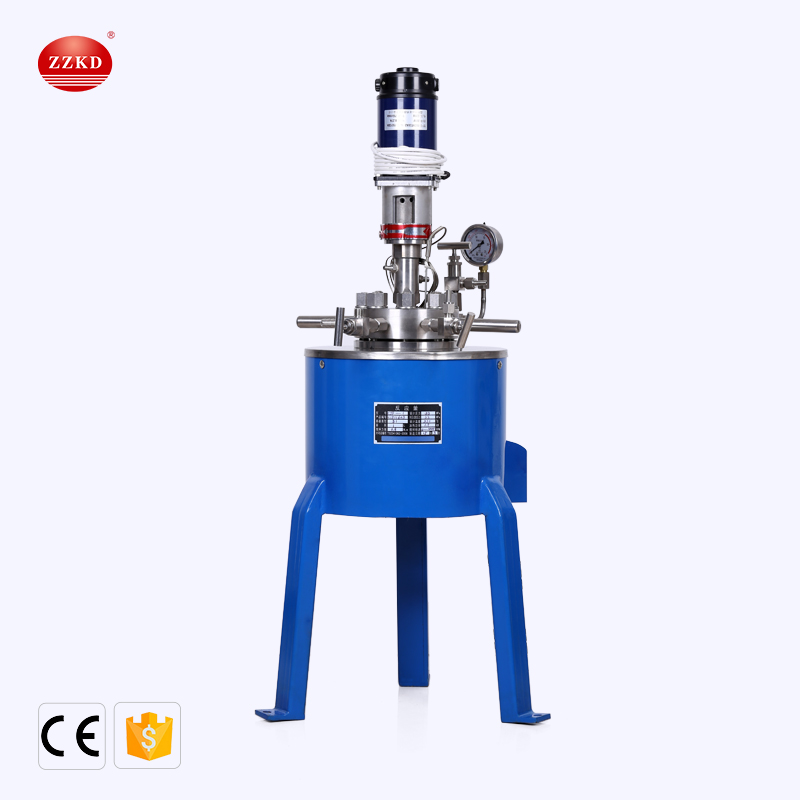Cleaning and maintenance of laboratory stainless steel autoclave
Laboratory high pressure reactor manufacturers is a commonly used laboratory reaction kettle product. It has the advantages of rapid heating, corrosion resistance, high temperature resistance, safety and hygiene, and no pollution. It can be widely used in chemical industry, food, paint, hot melt adhesive, silica gel , paint, medicine, petrochemical experiments in the reaction.
It solves the problem of shaft oil leakage that cannot be overcome by the packing seal and mechanical seal of the traditional reactor, without any leakage and pollution. Among them, stainless steel autoclave is the most widely used. The stainless steel autoclave should be cleaned in time after use to prevent some residue from corroding the autoclave. The following summarizes the cleaning and maintenance of laboratory stainless steel autoclave.

Laboratory Stainless Steel Autoclave
The following points should be paid attention to before cleaning the stainless steel autoclave:
1. It is necessary to understand the practicability of the selected cleaning method. If the cleaned kettle body is too large, it cannot be placed in the ultrasonic tank for cleaning.
2. It is necessary to understand the influence of the selected washing method on the performance and use of the laboratory autoclave. The selected cleaning method must not damage the sealing surface of the kettle body and lid, and prevent the equipment from being badly used.
3. It is necessary to understand the types of pollutants and select cleaning methods in a targeted manner. It should be noted that solvent washing, including ultrasonic cleaning, solvent vapor degreasing, and water-based cleaning agents, are commonly used methods for removing contaminants such as grease and wax. Chemical cleaning such as lye, acid etching, etc. is used to remove such as paint, carbon deposits or other contaminants that cannot be removed by solvent removal and chemical cleaning.
Cleaning steps of stainless steel autoclave:
1. Turn off the current switch of the autoclave first, and set the stirring switch and the speed-regulating heating switch to zero.
2. Rinse the inner wall, stirring and joint surfaces of the autoclave with the mother liquor before feeding, and then slowly close the upper cover to avoid bumping the joint surfaces.
3. Fill the reaction solvent from the exhaust valve into the autoclave, wash off most of the residue, then pour half of the water into the autoclave and stir for 10 minutes before opening the lid and cleaning the inner wall of the autoclave. .
4. When cleaning the autoclave, the lid and sampling valve must be cleaned, and at the same time, when there is water in the autoclave, fill it with nitrogen.
5. For the reactor that is not in use temporarily, it is best to add 70% volume of clean absolute ethanol to the high-pressure reactor to soak it, and it is not necessary to tighten the screws. After the autoclave is cleaned, it is convenient for the next use.
About the maintenance of laboratory stainless steel autoclave:
1. The laboratory stainless steel reactor should be placed indoors. When equipping multiple laboratory stainless steel reactors, they should be placed separately. Each operating room should have an outlet directly leading to the outdoors or passage, and the equipment location should be well ventilated.
2. When installing the laboratory stainless steel reactor cover, the sealing surfaces of the stainless steel reactor body and the stainless steel reactor cover should be prevented from colliding with each other. Carefully place the stainless steel reactor cover on the stainless steel reactor body in a fixed position. When tightening the main nut, it must be tightened diagonally and symmetrically for several times. The force should be uniform, and the stainless steel reactor cover should not be tilted to one side, so as not to affect the sealing effect.
3. At the connection between the positive and negative nuts, only the positive and negative nuts are allowed to be rotated. The two arc sealing surfaces must not be rotated relative to each other. When all nut thread joints are assembled, lubricating oil should be applied.
4. The tie-line seal of the needle valve can achieve a certain good sealing effect by gently turning its valve needle and pressing its sealing surface.
5. Move the rotating body on the stainless steel reaction kettle by hand to check whether the operation is flexible.
6. The controller of the high-pressure stainless steel reactor should be placed flat on the operating table. The working environment temperature is 10-40 °C, the relative humidity is less than 85%, and the surrounding medium does not contain conductive dust and corrosive gases.
The above is the cleaning and maintenance of the laboratory stainless steel high pressure reactor summarized for everyone. In the daily long-term use process, the reaction effect and service life of the stainless steel high pressure reactor can be greatly improved. If you have needs, you can contact Zhengzhou Keda Machinery Equipment Co., Ltd. For decades, Zhengzhou Keda Machinery Equipment Co., Ltd. has been committed to the production and manufacture of laboratory instruments and pipe fittings. If you want to know about our products, or are interested in purchasing our instruments, please contact us, we will be happy to help you.


